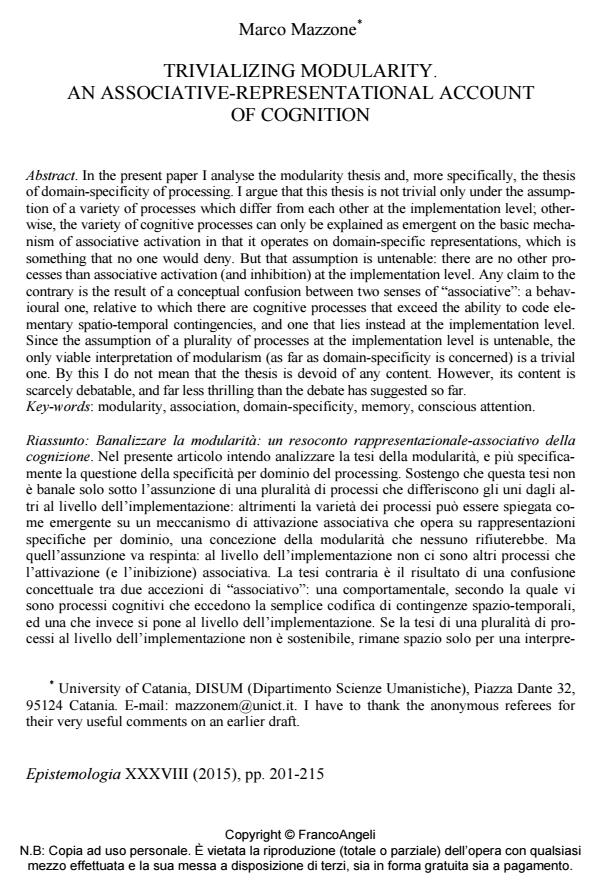Banalizzare la modularità: un resoconto rappresentazionale-associativo della cognizione
Journal title EPISTEMOLOGIA
Author/s Marco Mazzone
Publishing Year 2016 Issue 2015/2
Language English Pages 15 P. 201-215 File size 166 KB
DOI 10.3280/EPIS2015-002003
DOI is like a bar code for intellectual property: to have more infomation
click here
Below, you can see the article first page
If you want to buy this article in PDF format, you can do it, following the instructions to buy download credits

FrancoAngeli is member of Publishers International Linking Association, Inc (PILA), a not-for-profit association which run the CrossRef service enabling links to and from online scholarly content.
In the present paper I analyse the modularity thesis and, more specifically, the thesis of domain-specificity of processing. I argue that this thesis is not trivial only under the assumption of a variety of processes which differ from each other at the implementation level; otherwise, the variety of cognitive processes can only be explained as emergent on the basic mechanism of associative activation in that it operates on domain-specific representations, which is something that no one would deny. But that assumption is untenable: there are no other processes than associative activation (and inhibition) at the implementation level. Any claim to the contrary is the result of a conceptual confusion between two senses of "associative": a behavioural one, relative to which there are cognitive processes that exceed the ability to code elementary spatio-temporal contingencies, and one that lies instead at the implementation level. Since the assumption of a plurality of processes at the implementation level is untenable, the only viable interpretation of modularism (as far as domain-specificity is concerned) is a trivial one. By this I do not mean that the thesis is devoid of any content. However, its content is scarcely debatable, and far less thrilling than the debate has suggested so far.
Keywords: Modularity, association, domain-specificity, memory, conscious attention.
Marco Mazzone, Trivializing modularity. An associative-representational account of cognition in "EPISTEMOLOGIA" 2/2015, pp 201-215, DOI: 10.3280/EPIS2015-002003